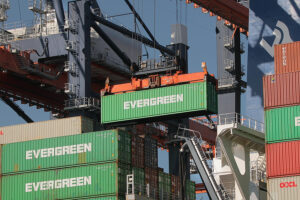The Marvel of Modern Trade
It’s a sight many of us have seen, whether in person along the docks or in a documentary: colossal ships lined with uniform metal boxes stacked like oversized Lego blocks. These aren’t just any boxes; they’re the backbone of global trade. But how do we go from a packed container on a massive ship to individual products on store shelves?
Industry operators and commercial entities have to be very careful and strategic about how they manage this duty at each end of the supply chain. With safety, costs and legal implications involved, this is a moment to review best practices and discuss methods that prove to be most effective.

Understanding the Boxes: Not Just Metal Walls
At first glance, these containers seem simple. However, there’s a meticulous design to every inch, ensuring goods remain safe and undamaged throughout their journey. Air-tight seals prevent moisture, while reinforced corners absorb jolts and bumps. Their standardised dimensions ensure compatibility with various transport modes, from ships to trucks.
Decoding the Process: From Ship to Shore
Once these containers touch the shore, a ballet of precision begins. Specialised cranes, operated by skilled workers, carefully lift each container. Timing and coordination are vital; one wrong move can lead to accidents or damaged goods. Then comes the pivotal moment: professional container unpacking. This is where resources and training combine for the necessary results.
Professional Container Unpacking: More Than Meets the Eye
Unloading a container isn’t as simple as opening it and taking out the goods. There’s an art and science to it. Goods packed in order of destination and delicacy require different techniques. Fragile items might need careful hand unloading, while bulk goods might employ machinery. The aim is to ensure that products emerge in the same condition as when they were packed.
The Human Element: Skills That Make a Difference
Behind every machine and every technique stands a human with unique skills. Spatial awareness, understanding of goods, and physical endurance all play a role. These individuals can look at a container and chart the most efficient unloading plan, minimising damage and maximising speed.
The Environmental Angle
Containers don’t just transport goods; they sometimes bring along unintended passengers or contaminants. Professionals ensure that bio-security measures are adhered to, preventing the accidental introduction of foreign species or diseases. There will be specialists who oversee this domain and run rigorous checks to avoid any chance of contamination.
Unloading and The Bigger Picture
After unloading, goods often undergo further sorting. This ensures products head to their correct destinations, whether it’s a retail store, warehouse, or your front door. The entire process reflects a global dance of trade and logistics, bringing products from far-off lands right into our hands.
In Conclusion
From the first glimpse of a cargo ship lined with containers to the products we use daily, a world of precision and expertise operates behind the scenes. The act of efficient global trade practices doesn’t just depend on ships or trucks but on the individuals and skills ensuring every item reaches its destination safely and promptly. Interested parties should talk to experienced operators about their approach and what types of modern techniques and resources are driving efficiency in the current landscape.
